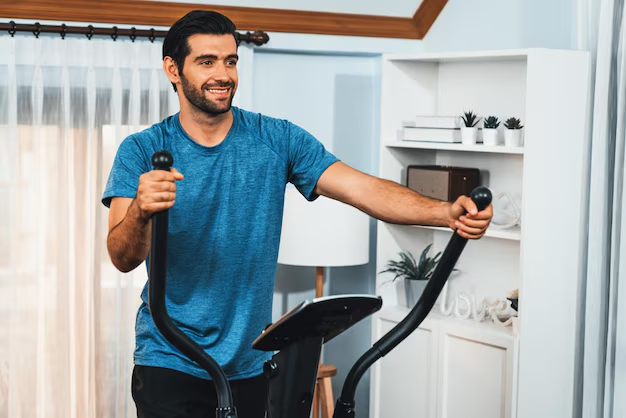How to Clean Your Refrigerator Coils Without a Brush: A Comprehensive Guide
Do you ever wonder why your refrigerator isn't cooling as efficiently as it used to? One often overlooked reason is the buildup of dust and debris on the refrigerator coils. While cleaning these coils is commonly done with a coil brush, what if you don't have one on hand? Fear not, for this guide will walk you through the process of cleaning your refrigerator coils without a brush, ensuring your fridge runs smoothly and efficiently.
Why Cleaning Refrigerator Coils Matters
Efficiency Boost: Keeping refrigerator coils clean ensures your appliance runs at optimal efficiency. Dust and dirt act as insulators, which make it harder for the coils to release heat. This can cause the compressor to work overtime, leading to higher energy bills and potential premature wear.
Extended Lifespan: Regular maintenance not only improves efficiency but can also extend the lifespan of your refrigerator. By avoiding unnecessary strain on the cooling system, you're protecting your investment in the long run.
Improved Cooling: Clean coils mean better cooling performance. This translates to food staying fresher for longer, reducing waste and frequent grocery runs.
Gather Your Supplies
Cleaning refrigerator coils without a brush may seem daunting, but with the right alternative tools, it's perfectly manageable. Here’s what you’ll need:
- Vacuum Cleaner: With a hose attachment.
- Compressed Air Can: Perfect for blowing dirt out of tight spaces.
- Soft Cloth or Microfiber: For wiping down surfaces.
- Flexible Duster: An extendable tool with a soft head can help reach coils.
Optional Tools
- Flashlight: To help you see in dark corners.
- Face Mask: If you're sensitive to dust.
Step-by-Step Guide to Cleaning Coils Without a Brush
1. Safety First: Unplug the Refrigerator
🔌 Unplug your refrigerator to ensure safety before beginning any cleaning. Working with electrical appliances always requires caution.
2. Locate the Coils
Most refrigerator coils are either located at the back of the unit or underneath it. For built-in models, check the top.
🕵️ Use a flashlight if needed to see underneath or behind the refrigerator clearly.
3. Remove the Toe Grille (if present)
For refrigerators with coils located at the bottom, you may need to remove the toe grille:
- Gently pull or unscrew the grille from the base.
- Set it aside safely.
4. Use a Vacuum Cleaner
🧹 Vacuum the area around the coils using the hose attachment. Try to remove as much dust and debris as possible. Be gentle to avoid any accidental damage to delicate parts.
5. Blow Away Remaining Dust with Compressed Air
💨 Use compressed air to blow dust out from the coils and any hard-to-reach areas. Hold the can upright and use short bursts to prevent moisture from forming.
6. Wipe Down with a Soft Cloth
🧼 Take a damp microfiber cloth or soft cloth and wipe down any remaining dust and dirt on and around the coils. This will also help collect any debris blown away from the compressed air.
7. Reattach the Toe Grille
If you removed the toe grille, attach it back securely before plugging the refrigerator back in.
8. Plug In and Enjoy Improved Efficiency
🔌 With the coils clean, plug your refrigerator back in and observe the improvement in its cooling efficiency.
Related Subtopics: Tips for Regular Maintenance
Seasonal Cleaning Schedule
🗓️ Create a maintenance schedule for your refrigerator. Depending on usage and environment, cleaning the coils twice a year is usually sufficient. Households with pets or smokers may need more frequent cleaning.
Keeping the Kitchen Environment Clean
🌬️ Reduce dust accumulation by maintaining clean surfaces and regularly vacuuming the kitchen floor. This minimizes how much dirt reaches your refrigerator coils in the first place.
Monitoring Refrigerator Performance
⏳ Keep an eye on energy consumption. If you notice your fridge is running more often or food isn’t staying as cold, inspect the coils for dust buildup.
Additional Maintenance Tips
Checking Door Seals
👀 Inspect door seals regularly to ensure they are not cracked or loose. A good seal keeps the cold air in and the warm air out.
Temperature Settings
🌡️ Optimal temperature settings for a refrigerator are between 37°F (3°C) and 40°F (5°C). For the freezer, aim for 0°F (-18°C).
Decluttering the Fridge Interior
🚮 Keep the contents of the fridge organized. Overstuffed shelves can restrict air circulation, affecting cooling efficiency.
Quick Tips Recap: Keeping Coils Clean Without a Brush
Here's a quick summary of the key steps and tips to clean your refrigerator coils effectively, without using a brush:
- 🔌 Unplug the refrigerator for safety.
- 📍 Locate the coils — typically behind or under the unit.
- 🧹 Use a vacuum cleaner with a hose attachment for major debris.
- 💨 Utilize compressed air to dislodge stubborn dirt.
- 🧼 Wipe down coils with a soft, damp cloth.
- 🔌 Reattach any components and plug in the fridge.
- 🗓️ Regularly schedule maintenance to optimize performance.
Bringing It All Together
Cleaning your refrigerator coils without a brush might add a small step to your housework, but it's a beneficial task that ensures your refrigerator remains efficient and durable over time. A well-maintained fridge not only reduces energy consumption but also keeps your food fresh and your kitchen running smoothly. By following the steps and tips outlined in this guide, you empower yourself to take control of your appliance’s health, enhancing both its performance and longevity.
By incorporating this routine into your household chores, you reclaim a degree of efficiency for an often-overlooked kitchen component, making your home a more sustainable and cost-effective environment. 🌟
